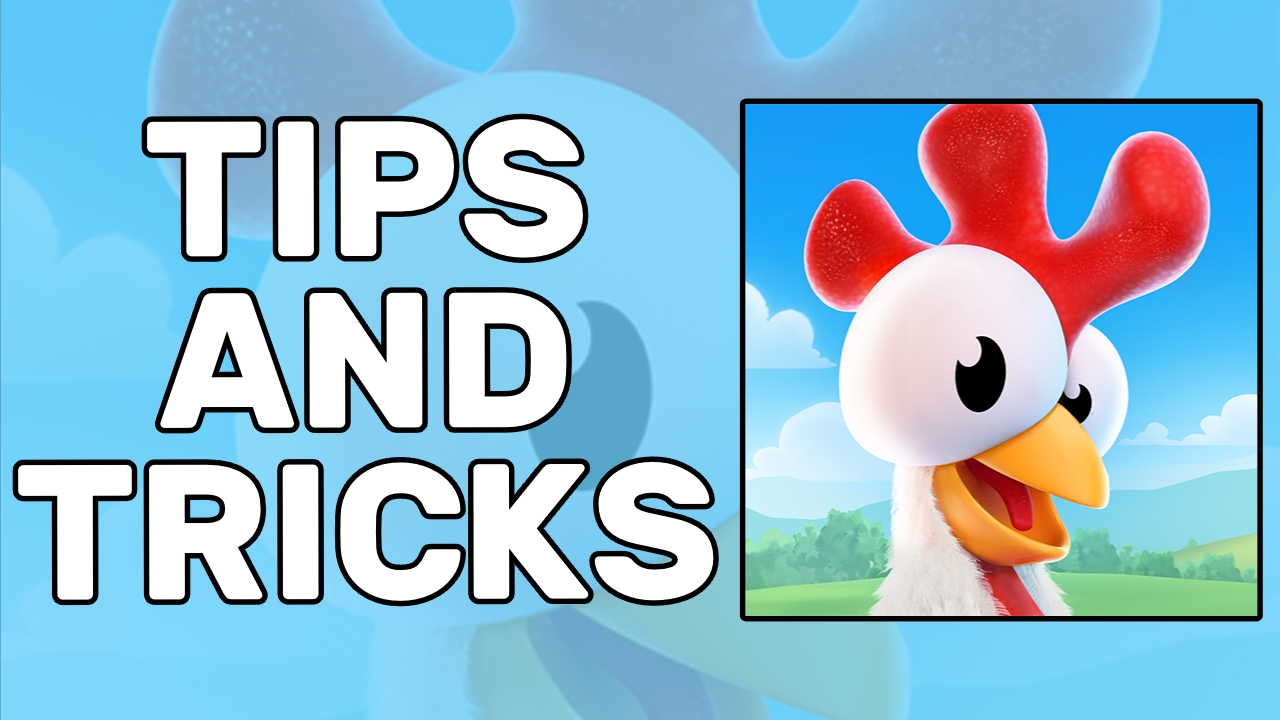Hay Day Hacks: Tips and Tricks for Beginners
Welcome to the world of Hay Day, a delightful farming game that allows you to cultivate crops, raise animals, and trade goods with friends. As a beginner, you might feel overwhelmed by the multitude of tasks and options available. Fear not! This blog post will guide you through the essential tips and tricks to help you become a successful farmer in Hay Day.
Understand the Basics: The Foundation of Your Farming Success
Hay Day is a game that revolves around resource management. As a farmer, you’ll be responsible for a variety of tasks, from growing crops to raising animals and producing goods. Understanding the basics of these tasks and how they interconnect is the first step towards building a thriving farm.
Currency: The lifeblood of your farm is its currency. In Hay Day, there are two types of currency: coins and diamonds. Coins are the primary currency, which you’ll earn from selling goods and completing orders. You’ll use coins to buy most of the basic items in the game, such as production buildings, farm animals, and crops.
Diamonds, on the other hand, are the premium currency. You’ll earn diamonds through leveling up, completing achievements, or finding them in mystery boxes. Diamonds can be used to speed up processes, purchase special items, or buy more production slots in your buildings. However, they are much harder to come by than coins, so it’s important to use them wisely.
Crops: Your farm’s crops are the foundation of your production. Different crops take different amounts of time to grow and yield different profits. Wheat, for example, grows quickly and can be sold for a good profit or used as feed for your animals. Other crops, like corn and soybeans, take longer to grow but can be used in a variety of goods.
Animals: Animals are another important aspect of your farm. They provide raw materials like milk, eggs, and bacon, which you can use in your production buildings to make goods. Animals need to be fed regularly with feed produced from your crops.
Production Buildings: These are where you’ll turn your raw materials into valuable goods. Each building produces different items, from bread in the Bakery to cream in the Dairy. Keeping your production buildings busy is key to maintaining a steady flow of goods and income.
Understanding these basics will set you on the path to success in Hay Day. Remember, a successful farm is a well-managed farm!
Prioritize Your Crops: The Key to a Flourishing Farm
In Hay Day, crops are the backbone of your farming operations. They provide the raw materials for your goods, feed for your animals, and can be sold directly for a profit. Prioritizing your crops effectively can significantly boost your productivity and profitability.
Wheat: Wheat is one of the most essential crops in Hay Day. It grows quickly – in just two minutes – making it a great crop to plant if you’re actively playing the game. Wheat can be used in many recipes, and it’s also the primary ingredient for chicken and pig feed. Additionally, wheat can be sold for a good profit in your roadside shop, especially when you sell in bulk.
Corn and Soybeans: Corn and soybeans are other valuable crops to prioritize. They take longer to grow than wheat (5 minutes for corn and 20 minutes for soybeans), but they are used in a variety of goods and animal feeds. Corn is used in cow and sheep feed, while soybeans are used in all types of feed.
Diversification: While wheat, corn, and soybeans are crucial, it’s also important to diversify your crops. Different crops are required for different goods and animal feeds. For example, carrots are needed for goat feed, and sugarcane is used in the Sugar Mill to produce sugar. Diversifying your crops ensures you have the raw materials needed for a wide range of goods.
Crop Rotation: To maximize your productivity, consider implementing a crop rotation system. This involves planting different crops in a cycle, based on their growth times and your play schedule. For example, if you’re actively playing, you might plant a lot of wheat for quick harvesting. But if you’re about to take a break, you could plant crops with longer growth times, like pumpkins or indigo. This way, your crops will be ready to harvest when you return to the game.
By prioritizing and managing your crops effectively, you can ensure a steady supply of raw materials for your farm, keep your animals well-fed, and generate a healthy profit from your roadside shop. Remember, a successful farmer knows their crops!
Keep Your Production Buildings Busy: The Pathway to Profit
Production buildings are the heart of your farm in Hay Day. They transform your raw materials into valuable goods, which can be sold for a profit or used to fulfill orders. Keeping your production buildings busy is key to maintaining a steady flow of goods and income.
Types of Production Buildings: There are several types of production buildings in Hay Day, each producing different goods. The Bakery, for example, uses wheat to produce bread. The Dairy turns milk into cream, butter, and cheese. The Sugar Mill uses sugarcane to make sugar and syrup. Understanding what each building produces and what raw materials it requires is crucial for efficient production.
Planning Your Production: To keep your production buildings busy, you need to plan ahead. Check what goods are required for orders on the order board or for upcoming boat deliveries. Then, set your production buildings to produce those goods. Remember to account for production times. Some goods take longer to produce than others, so plan accordingly.
Overnight Production: Hay Day continues to run even when you’re not actively playing. Use this to your advantage by setting your production buildings to produce long-duration goods overnight. This way, you’ll wake up to a fresh batch of goods ready for selling or fulfilling orders.
Expanding Production: As you level up and earn more coins, you can buy more production buildings and upgrade existing ones. Upgrades can increase the number of production slots, allowing you to queue up more goods. This is especially useful for keeping production going when you’re away from the game.
Balancing Demand and Supply: While it’s important to keep your production buildings busy, be careful not to overproduce. Storage space is limited, and you don’t want to be stuck with a surplus of goods you can’t sell or use. Keep an eye on your inventory and adjust your production as needed.
By keeping your production buildings busy and managing your goods effectively, you can maximize your profits and ensure your farm’s success. Remember, a productive farm is a profitable farm!
Master the Art of Trading: Turning Your Goods into Gold
Trading is a key aspect of Hay Day, allowing you to sell your goods to other players and buy items you need. Mastering the art of trading can significantly boost your income and help you progress faster in the game.
The Roadside Shop: Your roadside shop is where you’ll sell your goods to other players. You can set your own prices, but it’s important to price your items correctly. If your prices are too high, your goods may not sell. If your prices are too low, you’re missing out on potential profits. A quick check of other players’ shops can give you an idea of the going rate for different items.
The Daily Dirt: The Daily Dirt is Hay Day’s newspaper, listing items for sale by other players. It’s a great place to find deals. Some players sell items at low prices, either to make a quick sale or because they don’t know their true value. You can buy these items and resell them in your shop for a profit. The Daily Dirt is also a good source of items that are hard to produce or rare.
Trading Strategy: A good trading strategy is to focus on goods that are in high demand but hard to produce. These items can often be sold for a high price. For example, items like cream and cheese, which require milk (a limited resource), are often in high demand. Similarly, goods that require a lot of time or resources to produce, like pies and cakes, can also fetch a good price.
Negotiating Trades: In addition to selling through your roadside shop, you can also negotiate trades with other players. This is especially useful when you need a specific item quickly. You can post a request in your farm’s chat or in the Hay Day forums. Just remember to offer a fair trade – if you’re asking for a lot, be prepared to give a lot in return.
By mastering the art of trading, you can turn your farm’s produce into a steady stream of income. Remember, a successful farmer knows the value of their goods!
Don’t Ignore the Orders Board: A Goldmine of Opportunities
The orders board in Hay Day is a goldmine of opportunities for earning coins and experience points. However, it’s not just about accepting every order that comes your way. Being selective and strategic about the orders you fulfill can significantly boost your rewards.
Understanding the Orders Board: The orders board displays orders from various in-game characters. Each order requests certain goods and offers coins and experience points in return. The orders refresh over time, so there’s always a new set of orders to fulfill.
Being Selective: Not all orders are created equal. Some orders require a lot of resources or time to fulfill but offer relatively low rewards. It’s important to be selective about the orders you accept. Consider the resources and time required to fulfill an order and the rewards it offers. If an order doesn’t seem worth it, don’t hesitate to reject it. New orders will soon take its place.
Fulfilling Orders Strategically: When deciding which orders to fulfill, consider your current resources and production capacity. If you have a surplus of certain goods, look for orders that require those goods. If an order requires goods that you can produce quickly, that’s a good order to accept. On the other hand, if an order requires goods that take a long time to produce or that you’re running low on, it might be better to reject it.
Using the Express Train: Once you reach level 34, you’ll unlock the Express Train, which brings orders from the town. These orders generally offer higher rewards than the orders on the board, so they’re worth prioritizing. However, they also require more and rarer goods, so make sure you’re prepared.
By making smart use of the orders board, you can maximize your earnings and make the most of your farm’s production. Remember, a successful farmer knows their worth and doesn’t sell themselves short!
Conclusion
Hay Day is a game of strategy, patience, and fun. With these tips and tricks, you’re well on your way to becoming a successful farmer. Remember, the key is to enjoy the process. Happy farming!
For more detailed guides and strategies, you can check out the following resources:
- HayDayGuides | The #1 Place for HayDay Tips and Tricks!
- ‘Hay Day’ Strategy Guide: Tips & Tricks For Leveling, Collecting Coins …
- Hay Day Walkthrough and Guide – Super Cheats
- Hay Day – Apps on Google Play
- Hay day: Top 6 tips, tricks, and cheats to save cash and grow your farm fast! – iMore
Remember, the game is constantly evolving, and the community is always discovering new strategies and tips. So, keep exploring, keep learning, and most importantly, keep enjoying your farming adventure in Hay Day!






